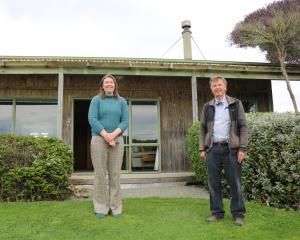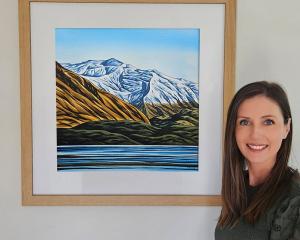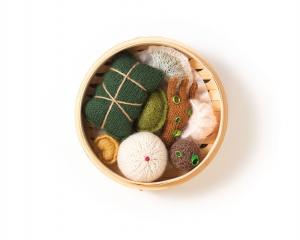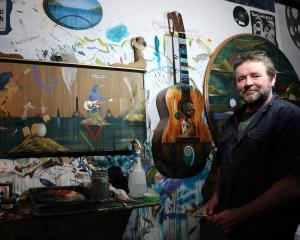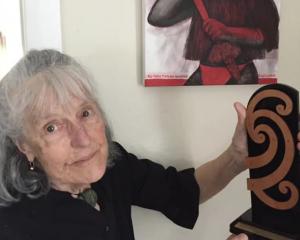Dunedin artist Diana Smillie has been to hell and back. And her oil paintings tell the dark and winding story of her journey.
"Ten years ago, I went through rehab for alcoholism. That process involved a huge amount of introspection, but a lot of insight came out of it," she says.
"The deeper and darker I can look into myself, the healthier I become. I've been sober for 10 years now."
Smillie's work pulls no punches, using metaphorical minotaurs and jackals to examine the barbaric and taboo; such as human sacrifice, domestic violence, genital mutilation and virginal rape.
"I'm always observing the undercurrents of human nature. The deep, dark stuff which people don't admit.
"It fascinates me a lot and has done for many years," Smillie says.
"I know that a lot of people recognise aspects of themselves when they look at my images. We've all got our dark side. You ignore it at your peril."
Her latest exhibition, "That's My Boy", is Smillie's third annual show at the Temple Gallery.
"It looks at the way a lot of women use their power over men, particularly in a maternal way," she says.
Her 2006 exhibition, "Family Life", addressed domestic violence, and "Mutter-Mother" last year looked at the dysfunctional, and sometimes cruel, relationships which can occur between between mothers and daughters.
Smillie (51) was born in Auckland and has predominantly worked as a book and fashion illustrator.
"I was a single mum for many years. It's only in the last six or seven years that I've had the freedom to paint," she says. "I've learned that it's important, even necessary, for me to paint.
"It's not so much therapy, but an ongoing recognition of things that can be dangerous to my own self.
"Also, giving shape to the extremes of human nature helps me make some kind of sense of the insanity in the world."
Her work has tendrils in Goya's haunting Black Paintings series, which he created towards the end of his life in the early 1800s.
"The images are not celebrations," Dunedin art commentator Peter Entwisle observed.
"They are savage, spectral elegies, playing out their horror as majestic anthems. Evil, they argue, has a corrupted splendour like a magnificent mantilla wound around a corpse. These are modern crucifixions."
"That's My Boy", by Diana Smillie, opens at the Temple Gallery at 5.30pm tomorrow.


